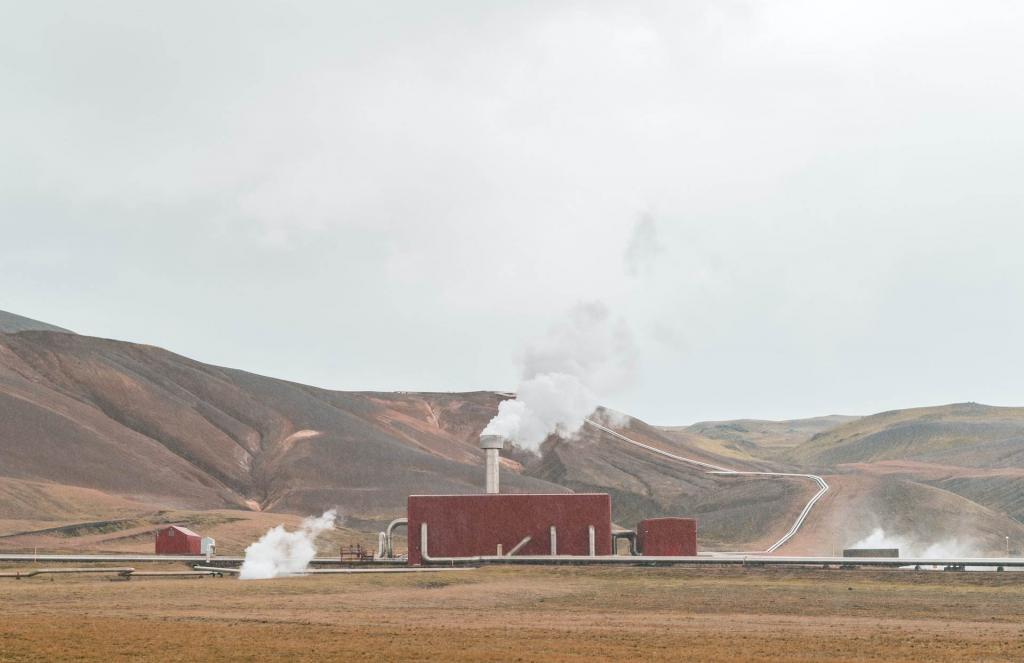Thessaloniki gets ready for its metro launch in November
The underground rapid transit lines have been under construction for almost two decades due to various project delays
 TheMayor.EU logo
TheMayor.EU logo 
Renewable energy can come in many forms, depending on geographical location, Source: Tommy Kwak / Unsplash
Sântana has only 11,000 residents, yet several municipal buildings will get connected to a renewable geothermal reservoir deep underground
This week, the Romanian town of Sântana announced a new project for using geothermal energy to heat public buildings. The project cost around 5.7 million euros and will supply the town hall, the 'Sfânta Ana' Secondary School and the 'Stefan Hell' Technological High School.
According to local Mayor Daniel Tomuţa, the old central heating system in these key public buildings will be cut off. He pointed out that this would allow the municipality to transition from fossil-fuelled district heating to more green and sustainable alternatives.
The geothermal project in Sântana calls for the construction of a 1,200-metre-deep borehole for the extraction of naturally heated water. Additionally, it also requires the construction of 2.7 kilometres of pipes for transporting the water and 2.2 kilometres of pipes for energy distribution. When the water has made it through the heating cycle through municipal buildings, it will be injected back into the thermal reservoir to ensure reusability.
Mayor Tomuţa explained that the project would bring considerable savings to the municipal budget and serve as a ‘step 1’ to a larger plan for implementing sustainable energy principles in the municipality.
The mayor was quoted by AGERPRES explaining that depending on the size of the reservoir, the geothermal option for Sântana could be expanded to cover even more municipal buildings.
He added that the city has a chance to hit a huge thermal reservoir, which can be exploited under local regulations to accelerate the green energy transition.
Sântana is a relatively small municipality with only 11,000 residents, located in Romania’s North-Western Arad County. Nevertheless, it is the second one to start exploiting geothermal energy to meet local energy demands. The first city in the county is Pecica, which has a similar population of 12,000.
Here, geothermal well-drilling started in the autumn of 2022 with two wells and a relatively consistent water temperature of about 50 degrees Celsius. The project cost around 5 million euros, and the sourced water will heat 13 buildings from this autumn, already affecting the municipal budget in a positive way.

The underground rapid transit lines have been under construction for almost two decades due to various project delays

Now you can get your wine in Talence by paying directly in Bitcoin

That’s because the state has to spend money on updating the railway infrastructure rather than subsidizing the cost of the popular pass

Rethinking renewable energy sources for the urban landscape

The examples, compiled by Beyond Fossil Fuels, can inform and inspire communities and entrepreneurs that still feel trepidation at the prospect of energy transition

Now you can get your wine in Talence by paying directly in Bitcoin

The 10th European Conference on Sustainable Cities and Towns (ESCT) sets the stage for stronger cooperation between the EU, national and local level to fast track Europe's transition to climate neutrality.

At least, that’s the promise made by the mayor of Paris, Anne Hidalgo

The underground rapid transit lines have been under construction for almost two decades due to various project delays

At least, that’s the promise made by the mayor of Paris, Anne Hidalgo

Hostal de Pinós is located in the geographical centre of the autonomous region

Despite its church-y name, the district has long been known as the hangout spot for the artsy crowds

Urban dwellers across the EU are having a say in making their surroundings friendlier to people and the environment.

Forests in the EU can help green the European construction industry and bolster a continent-wide push for architectural improvements.

Apply by 10 November and do your part for the transformation of European public spaces

An interview with the Mayor of a Polish city that seeks to reinvent itself

An interview with the newly elected ICLEI President and Mayor of Malmö

A conversation with the Mayor of Lisbon about the spirit and dimensions of innovation present in the Portuguese capital














